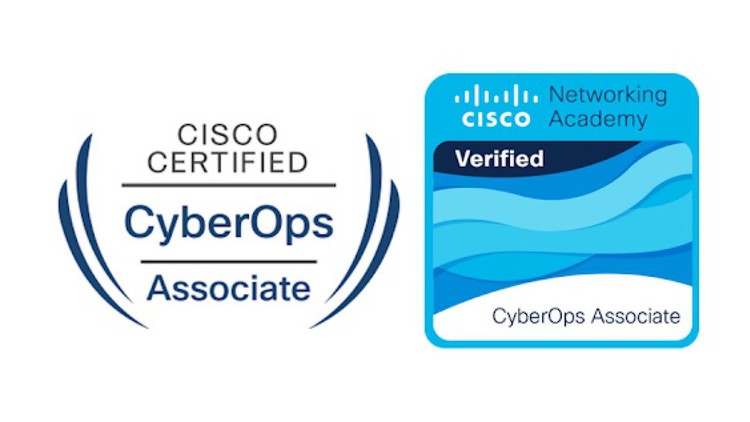
Attend this Cisco CCNA Cyber Ops Associate 200-201 CBROPS Practice Tests will get above 80% Score on Main Exam
What you will learn
Pass Cisco CCNA Cyber Ops Associate 200-201 CBROPS certification
Detailed explanations for each question, right and wrong answer
Similar difficulty to the actual exam.
Learn Cisco Cyber Security services
Description
This exam test your skill about security concepts, common network and application operations and attacks, and the types of data needed to investigate security incidents and monitor alerts and breaches, and how to understand and follow established procedures for response to alerts converted to incidents.The Understanding Cisco Cybersecurity Operations Fundamentals (200-201 CBROPS) exam is a 120-minute assessment that is associated with the Cisco Certified CyberOps Associate certification. CBROPS Cisco exam tests a candidate’s knowledge and skills related to security concepts, security monitoring, host-based analysis, network intrusion analysis, and security policies and procedures.
There are no prerequisites for the 200-201 CBROPS exam; however, students must have an understanding of networking and cybersecurity concepts.
This practice test help you to pass the exam. The contents of this test cover each of the domains represented in the exam.
1- Security Concepts (20%)
2- Security Monitoring (25%)
3- Host-based Analysis (20%)
4- Network Intrusion Analysis (20%)
5- Security Policies and Procedures (15%)
1- Security Concepts (20%)
– Describe the CIA triad
– Compare security deployments
– Describe security terms
– Compare security concepts
– Interpret the 5-tuple approach to isolate a compromised host in a grouped set of logs
– Compare rule-based detection vs. behavioral and statistical detection
2- Security Monitoring (25%)
– Compare attack surface and vulnerability
– Identify the types of data provided by these technologies
– Describe the impact of these technologies on data visibility
– Describe social engineering attacks
– Describe evasion and obfuscation techniques, such as tunneling, encryption, and proxies
– Describe the impact of certificates on security (includes PKI, public/private crossing the network, asymmetric/symmetric)
– Identify the certificate components in a given scenario
3- Host-based Analysis (20%)
– Describe the functionality of these endpoint technologies in regard to security monitoring
– Identify components of an operating system (such as Windows and Linux) in a given scenario
– Compare tampered and untampered disk image
– Interpret operating system, application, or command line logs to identify an event
– Interpret the output report of a malware analysis tool (such as a detonation chamber or sandbox)
4- Network Intrusion Analysis (20%)
– Map the provided events to source technologies
– Compare impact and no impact for these items
– Compare deep packet inspection with packet filtering and stateful firewall operation
– Extract files from a TCP stream when given a PCAP file and Wireshark
– Interpret common artifact elements from an event to identify an alert
5- Security Policies and Procedures (15%)
– Describe management concepts
– Describe the elements in an incident response plan as stated in NIST.SP800-61
– Apply the incident handling process (such as NIST.SP800-61) to an event
– Identify protected data in a network
– Classify intrusion events into categories as defined by security models, such as Cyber Kill Chain Model and Diamond Model of Intrusion
– Describe the relationship of SOC metrics to scope analysis (time to detect, time to contain, time to respond, time to control)